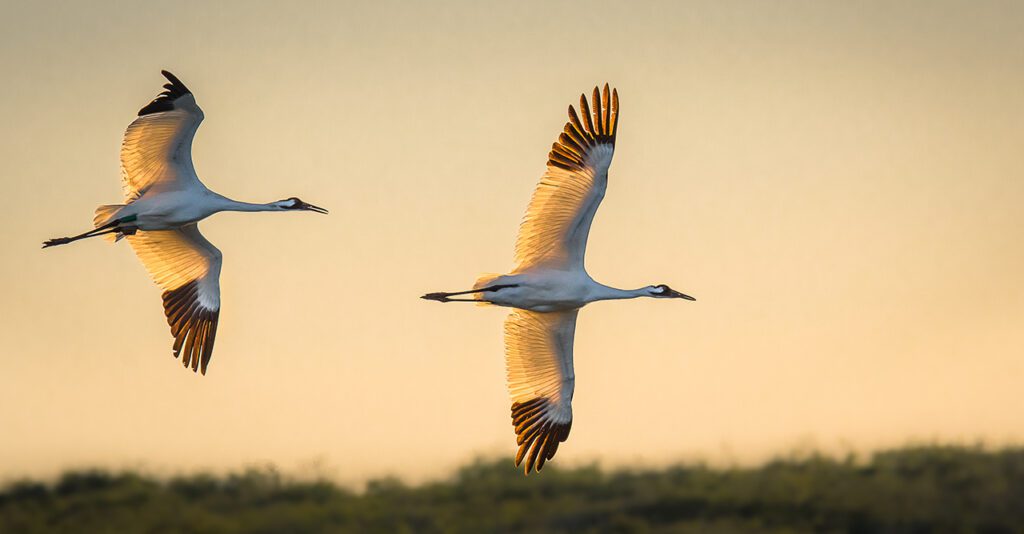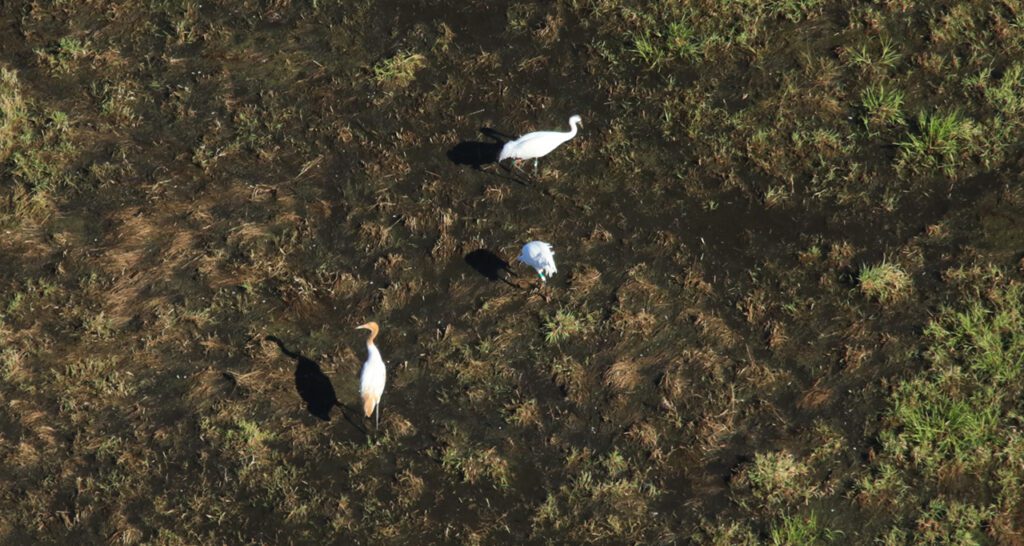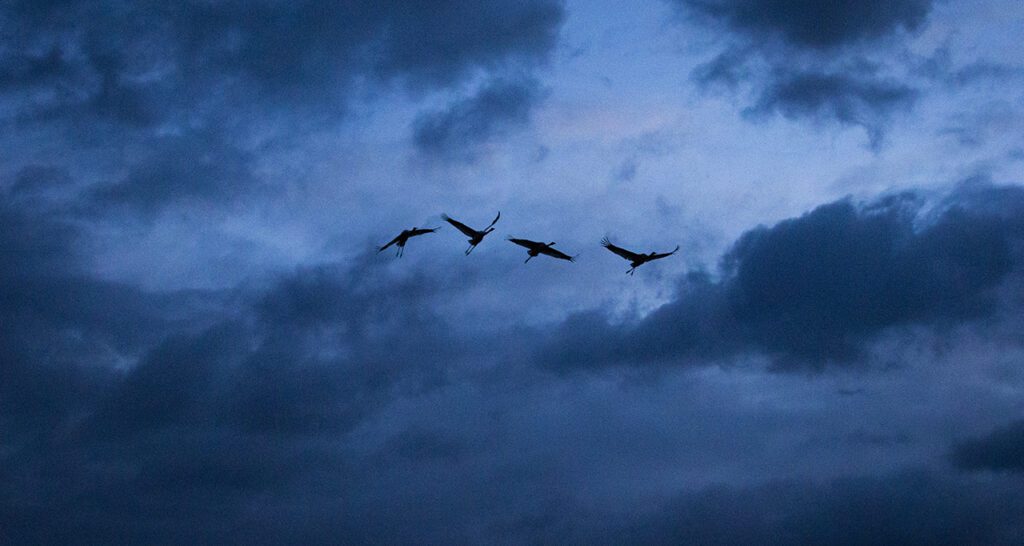Whooping Crane shootings
What We Know and Why It Matters
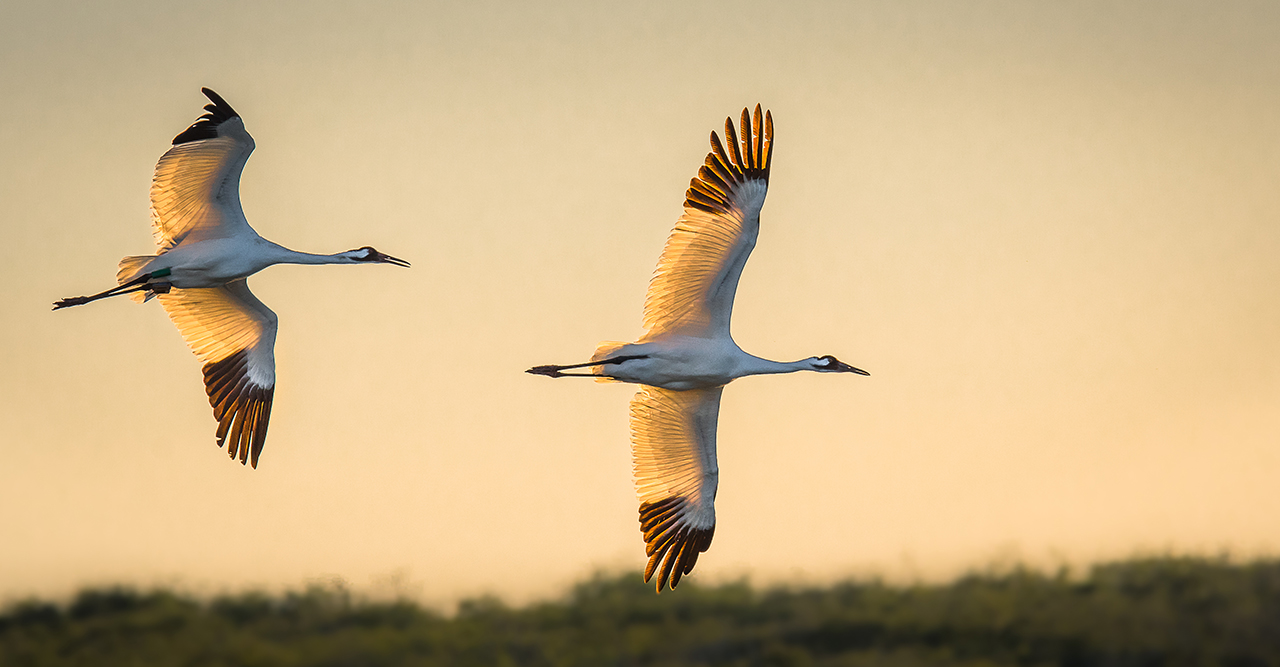
Illegal shootings are a significant threat to the survival of Endangered Whooping Cranes. Historically, shootings contributed to the decline of Whooping Cranes to the brink of extinction. People shot Whooping Cranes for the millinery trade, trophy hunting, museum collections, sustenance and recreation. Today, those of us who work in conservation would like to think we are past the period where people would shoot Whooping Cranes, but sadly, this is not so.
The International Crane Foundation takes this issue seriously. We’ve gathered information on 34 confirmed cases of Whooping Crane shootings since 1967, the year that the Whooping Crane was listed as a federally endangered species. What do these past cases tell us about the problem of Whooping Crane shootings?
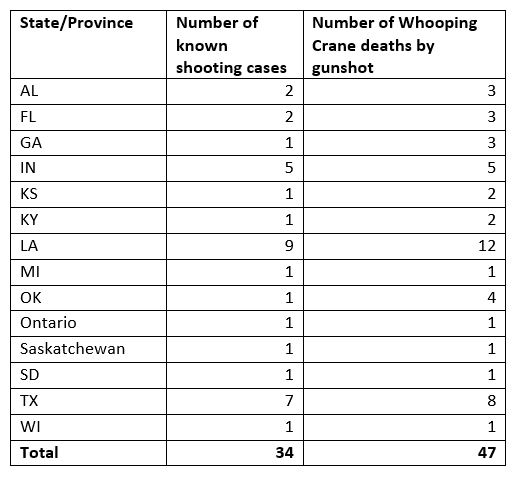
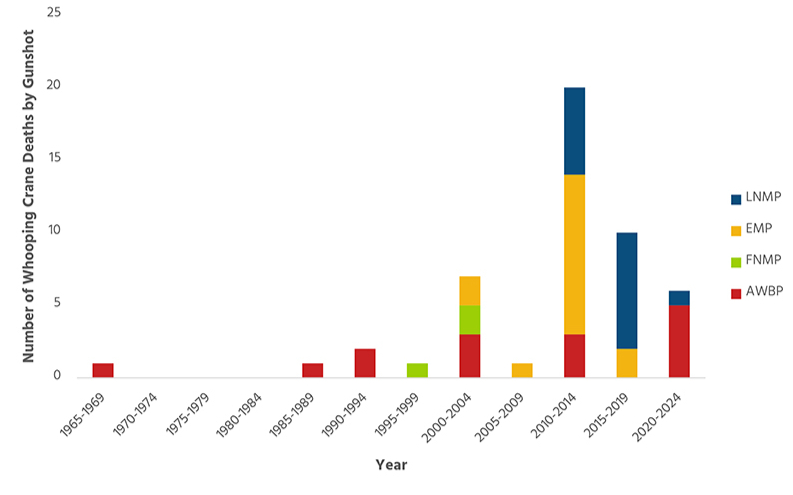
The number of Whooping Crane shootings has increased since reintroduction efforts began in the 1990s. Detectability of shooting incidents is likely higher in the reintroduced populations since the cranes are more heavily monitored than the Aransas-Wood Buffalo population. Explanation of abbreviations: LNMP = Louisiana Non-Migratory Population, FNMP = Florida Non-Migratory Population, EMP = Eastern Migratory Population, AWBP = Aransas-Wood Buffalo Population.
Since Whooping Crane reintroductions began in the 1990s, the majority of shooting cases have taken place in reintroduced populations. In cases where the location of a Whooping Crane shooting could be defined as public or private land, eighteen shooting cases took place on private land, and four took place on public land.
All identified perpetrators were white men with an average age of 26.3. Some of the perpetrators had prior convictions, such as a citation for driving under the influence of alcohol. In six cases, the perpetrators also conducted concurrent crimes, such as vandalism of property and shooting other non-game wildlife or game wildlife out of season. In multiple cases, alcohol was listed as a possible contributing factor.
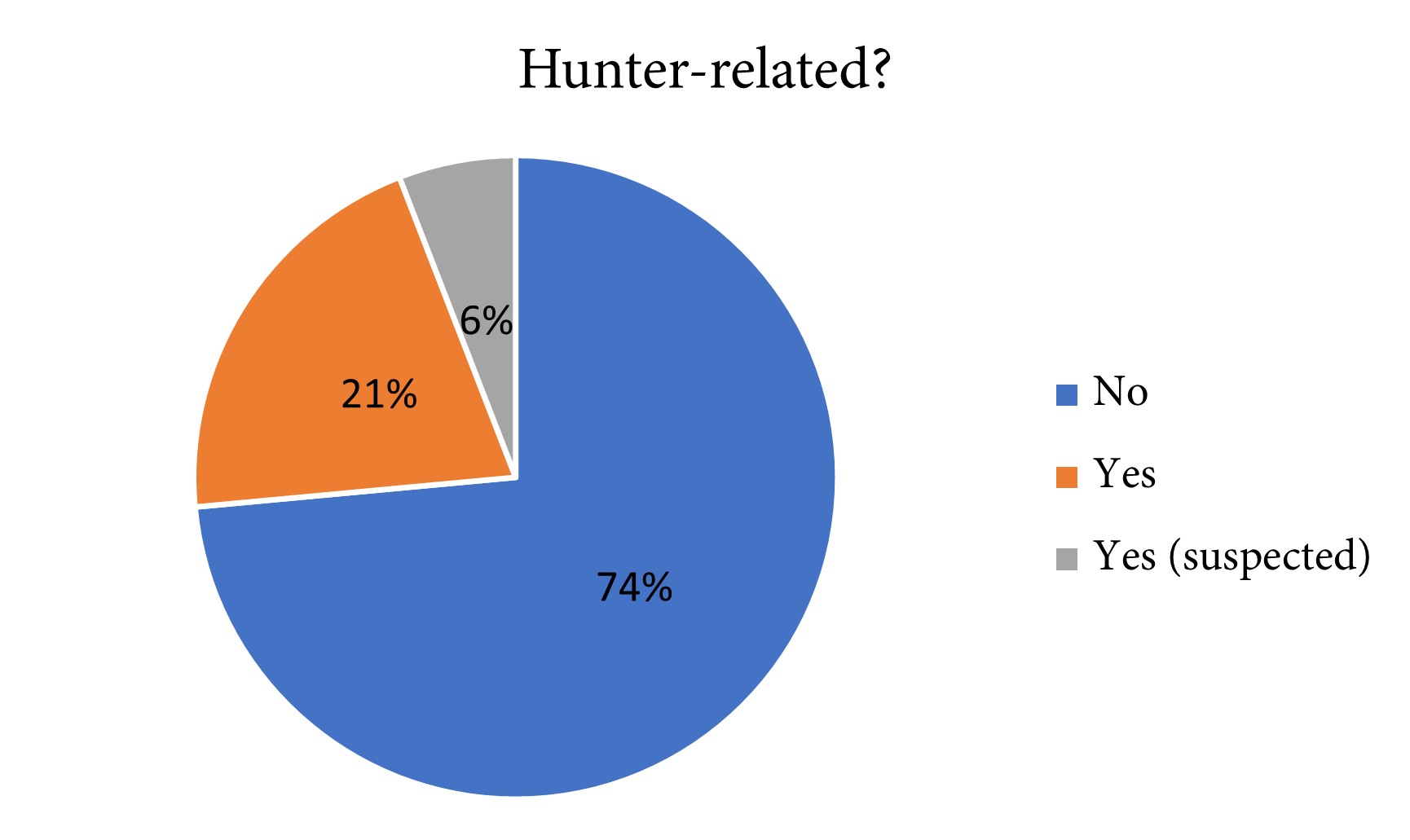
In the majority of cases, 74 percent, Whooping Crane shooting incidents were not related to hunting. However, in the few cases that involved hunters, the hunters were already in violation of a hunting regulation, such as shooting before legal hunting hours, when poor lighting makes identification difficult. In these cases, one might argue that the person was poaching, as people who violate hunting regulations are considered poachers.
The International Crane Foundation has taken this information and processed it through the lens of situational crime prevention and routine activity theory. Under this theory, for a crime to take place, there must be a suitable target — a motivated offender — and a lack of guardianship of the target. By knocking out one or more factors, a crime cannot occur. After reviewing the 25 common strategies to prevent crimes, we determined that a campaign to raise awareness and pride in the species would address many of the strategies.
We’ve engaged in awareness campaigns for seven years in Alabama and five years in Indiana, and have conducted outreach activities in Texas for the last eleven years. In 2021, we began an awareness campaign in Louisiana to grow and complement the decade-old awareness campaign by the Louisiana Department of Wildlife and Fisheries.
Our campaigns are based on data from social science surveys conducted by Auburn University, data from Purdue and Louisiana State Universities, and information we have gathered on confirmed shooting cases. We are working with state and federal agencies, birders, hunting groups, schools, civic leaders and other local partners to get communities to give a WHOOP about Whooping Cranes. We combine these campaigns with targeted efforts to educate key figures in the legal system, so perpetrators receive an appropriate sentence when Whooping Crane cases appear in court.
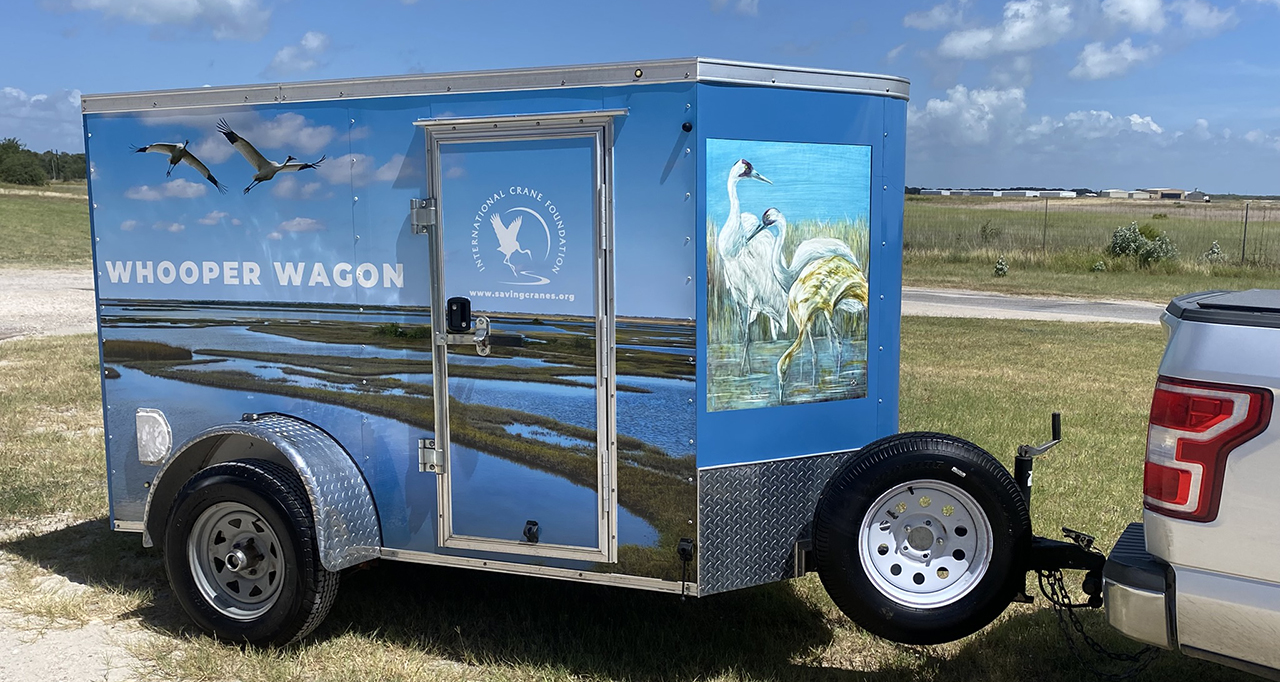 The new Whooper Wagon will help our Gulf Coast Program outreach team reach more people on the Whooping Crane’s wintering grounds in Texas.
The new Whooper Wagon will help our Gulf Coast Program outreach team reach more people on the Whooping Crane’s wintering grounds in Texas.
The recent shooting in Oklahoma in late 2021 was the first documented in that state, and more Whooping Cranes were killed (four) than in any other single incident. Before this event, the most recent Whooping Crane shootings were in 2019, with one eastern flyway crane killed in Ontario and one Louisiana population crane shot in Louisiana.
Our outreach work has helped educate people in the eastern flyway, Louisiana and Texas, and we are creating communities that care about Whooping Cranes. However, we must redouble our efforts to protect these Endangered Whooping Cranes further. We continue to be the voice and act for Whooping Cranes to ensure their complete recovery.
